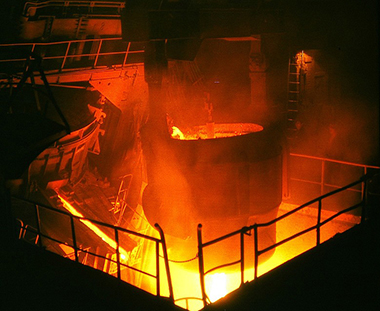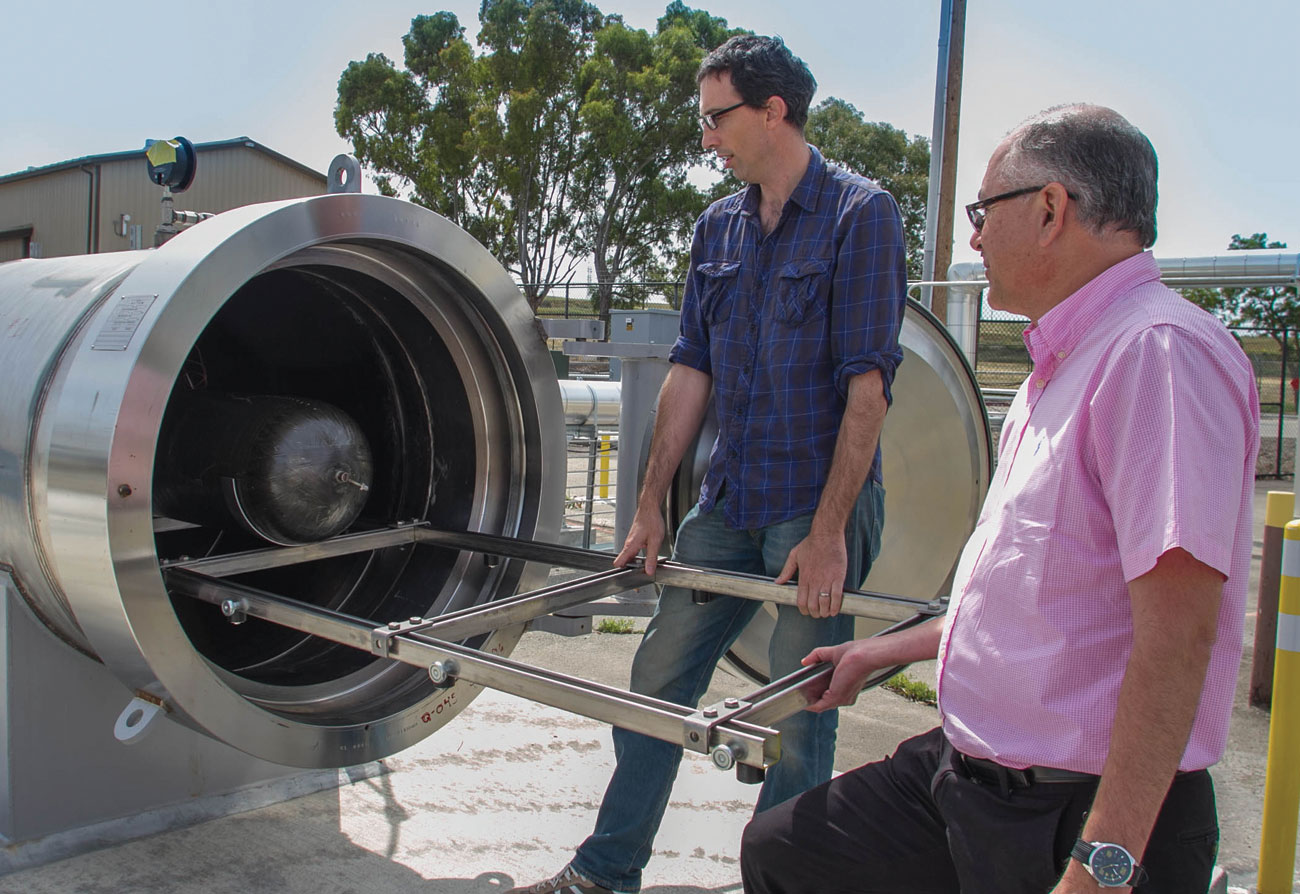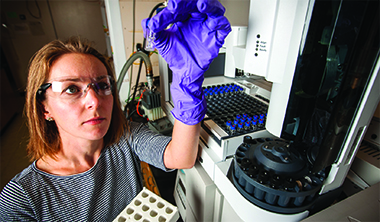Using science and technology to improve national energy security and surety, protect the environment, and understand and mitigate climate change
Laboratory researchers apply leading-edge capabilities to develop efficient, environmentally benign energy technologies and to investigate the processes behind climate change.
Computational Innovation to Boost U.S. Industry
The High Performance Computing for Manufacturing (HPC4Mfg) Program currently provides $11.4 million to support 28 projects involving 23 U.S. companies and Lawrence Livermore, Lawrence Berkeley, and Oak Ridge national laboratories. Established at LLNL by DOE’s Office of Energy Efficiency and Renewable Energy (EERE) in 2015, the program funds experts at DOE’s national laboratories to work directly with manufacturing industry partners. HPC4Mfg helps companies use HPC to better understand manufacturing processes so that they can increase energy efficiency, reduce environmental impacts, and advance clean-energy technologies. The program is growing, with the second round of proposal solicitations for the year launched in September 2016.
As part of the program, LLNL is working with Purdue University and a steel manufacturing consortium to simulate and optimize the smelting process and reduce reliance on coke—a coal-based fuel with high carbon content. Other projects aim to improve paper manufacturing, enhance predictability in additive-manufacturing processes, and increase the efficiency and component life of aircraft engines through design optimization.
Innovations for Hydrogen-Powered Vehicles
Supported by DOE’s EERE, researchers are using the Laboratory’s new Cryogenic Hydrogen Test Facility to improve hydrogen storage and delivery for vehicles. For nearly two decades, LLNL scientists have been at the forefront of researching hydrogen as a viable pollution-free transportation fuel. The test facility includes a stainless steel containment unit to test the safety of full-scale vehicular hydrogen vessels. Livermore, in partnership with Spencer Composites and BMW, has designed and built several innovative prototypes. The pumping station at the test facility uses a new high-density liquid-hydrogen pumping process that fuels vehicles more quickly with less costly, smaller, and more energy-efficient equipment than current hydrogen fueling stations.
Conversion of Methane to Methanol
Laboratory scientists have combined biology and 3D printing to create the first reactor that can continuously produce methanol from methane at ambient temperature and pressure. Methane is a greenhouse gas, and emissions from oil and gas extraction pose a potential for net global warming. By converting methane to methanol, it can be used for fuels, solvents, and antifreeze. The team removed enzymes from methanotrophs, methane-eating bacteria, and mixed them with polymers that they can print (or mold) into innovative chemical reactors. The printed enzyme-embedded polymer is a highly flexible and efficient reactor, which should be useful in a wide range of applications.
Secrets about Soil Carbon Revealed
A Livermore-led research team is probing the fundamental mechanisms that regulate decomposition rates of soil organic matter (SOM) at the level of individual microbial cells and mineral particles. Two-thirds of the carbon in the terrestrial biosphere is stored underground as SOM, a complex mixture of decaying plant and microbial cell material. The amount of carbon that is retained within SOM, rather than released as atmospheric carbon dioxide (CO 2 ), is an important factor affecting climate change. The team is combining the capabilities of two advanced, high-resolution imaging technologies: the nanometer-scale secondary ion mass spectrometer (NanoSIMS) at Livermore and scanning transmission x-ray microscopy (STXM) at Lawrence Berkeley. One discovery is that the organic compounds released by plant roots can act directly on soil minerals, break chemical bonds, and release long-stored carbon. As climate change increases plant growth, the release of CO 2 into the atmosphere by this mechanism will accelerate.
Oceans, Clouds, and Global Climate Change
Three studies by LLNL scientists and colleagues further substantiate growing concerns about climate change. One study, published in Nature Climate Change , found that half of the increase in global ocean heat content since 1865 has occurred over the last two decades. Changes in ocean heat storage are important because the ocean absorbs more than 90 percent of the Earth’s excess heat increase associated with climate change. In another study, published in Nature, scientists found that changes in cloud patterns during the last three decades match those predicted by climate model simulations. These cloud changes are likely to have a warming effect on the planet. Much of the uncertainty in how much the planet will warm in response to greenhouse gas emissions is due to uncertainty in how clouds will respond. A third paper, published in Science, concluded that today’s climate models are making clouds too bright and overly reflective as the planet warms. This high reflectivity may be causing models to underestimate how much global warming will occur as a result of increased atmospheric CO 2 .
Enhancing Power Grid Cyber Security
Cyber security experts from Lawrence Livermore and Lawrence Berkeley national laboratories are leading a new program to develop new data analysis methods for better protecting the nation’s power grid from advanced cyber threats. The team is collecting data from various sources and evaluating them using advanced analytics to identify threats and improve response methods. The group is partnering with the Electric Power Board and the National Rural Electric Cooperative Association, which will provide data and collaborate in technology transfer to the power industry. The effort is a component of DOE’s Grid Modernization Initiative, announced by Secretary Ernie Moniz in January 2016. Altogether, LLNL researchers are working on 14 new grid research projects through this $220-million, three-year initiative.








